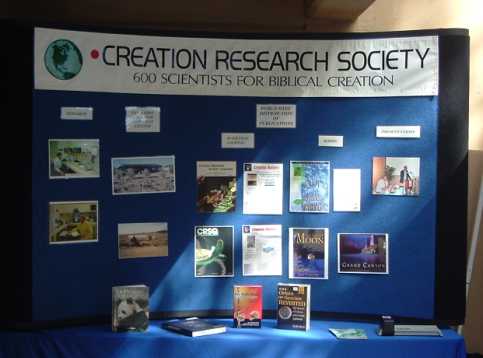I Was a Token Darwinist
I was the “Opposing View” at last week’s Darwin, Design and Democracy V conference, held on September 24th and 25th in Albuquerque, New Mexico. The title of this post is derived from one of the videos sold at the conference, “I was a Teenage Darwinist”, which in turn was derived from the 1957 Michael Landon horror movie “I was a Teenage Werewolf.”
I didn’t get to attend the whole conference, as I was tied up with a wedding of one of my brothers (not a blood brother, but a “brother” in the sense of “Band of Brothers”). That was a hoot, but prevented me from seeing the Behe and Dembski keynote addresses, alas.
My presentation was titled “The Top Ten Myths of Intelligent Design,” and is on-line here. William Dembski attended the morning session. He didn’t react too much when I said that “Dembski’s NFL (No Free Lunch) claim, ‘Evolutionary (Genetic) Algorithms perform no better than Chance (when averaged over all possible fitness functions)’ has been found irrelevant by many reviewers. Evolution isn’t averaged over all possible environments - why should genetic algorithms?” (See Myth # 2.) However, when I discussed Hoppe’s “Multiple Designers Theory”, Dembski was quite emphatic that Intelligent Design (ID) was open to that possibility, and cited Hindus who were very interested in ID in support of that claim.
Michael Behe attended my afternoon session. Like Dembski, he didn’t react to my declaration that new work on coral evolution has clearly overthrown Behe’s concept of “Irreducible Complexity” as an obstacle to natural evolution of complex structures. I spent quite a bit of time on this topic, showing in detail that the ancient coral pigment, green, is caused by a protein that catalyzes two chemical reactions (a cyclization and a dehydrogenation), whereas the red pigment that this study showed evolved from the green, in a step-by-step fashion, is more complex, catalyzing three reactions (a cyclization, a dehydrogenation , and another dehydrogenation).

Neither Dembski nor Behe spoke to me after my talk, but they did pick up my handouts with the references for the key papers I cited. Whether or not they decide to correct their disproved hypotheses remains to be seen. From past experience, I’ll not be holding my breath.
I had more interaction with John Calvert, who talked with me about a movie called “Murder on a Sunday” during the lunch break. His point was that the movie described a murder, wherein an innocent boy that matched the suspect’s profile [black, male, and in the wrong place at the right time] was unjustly charged by police. The defense won an aquittal by showing that the police were too quick to accept their initial hypothesis, and that they should have been more willing to consider “alternative” hypotheses. Then, Calvert declared that failure to consider alternatives actually weakens the support for any hypothesis, and thus that science should allow discussion of ID in schools, lest it be weakened by failing to do so. Had I had more time (the afternoon sessions started about this time), I would have responded that I agreed, provided that the “alternative hypotheses” could actually be tested. I had touched on this very topic earlier that morning, when I said that science doesn’t deny the supernatural, but that it can’t do any tests on vaguely defined “miracles” like ID. (I also offered a counterexample, the Bible Code, which has been defined explicitly, and indeed allows for testing of the concept that a supernatural Deity has encoded secret messages into the Torah. By the way, it didn’t pan out).
I also had a cordial talk with Paul Nelson, who had talked about molecular re-creations of known viral phylogenies that were totally distorted by convergent evolution. I’ve sent Paul the info about a study that showed excellent recreation of known phylogenies, and we’re discussing it over e-mail.
I’ll have to listen to the tapes before I can summarize other talks. There were some memorable schizophrenic moments, though. During my talks, I was repeatedly asked “what will it take to stop calling us (IDer’s) creationists?” Outside, however, the Creation Research Society sold books, including the ID Favorite “Of Pandas and People.” CD’s of creationist symposia, and copies of creationist books like Walter ReMine’s “The Biotic Message” were also available.

Perhaps these IDers have been denying they’re creationists for so long that they’ve lost the ability to parse what their eyes are seeing.
